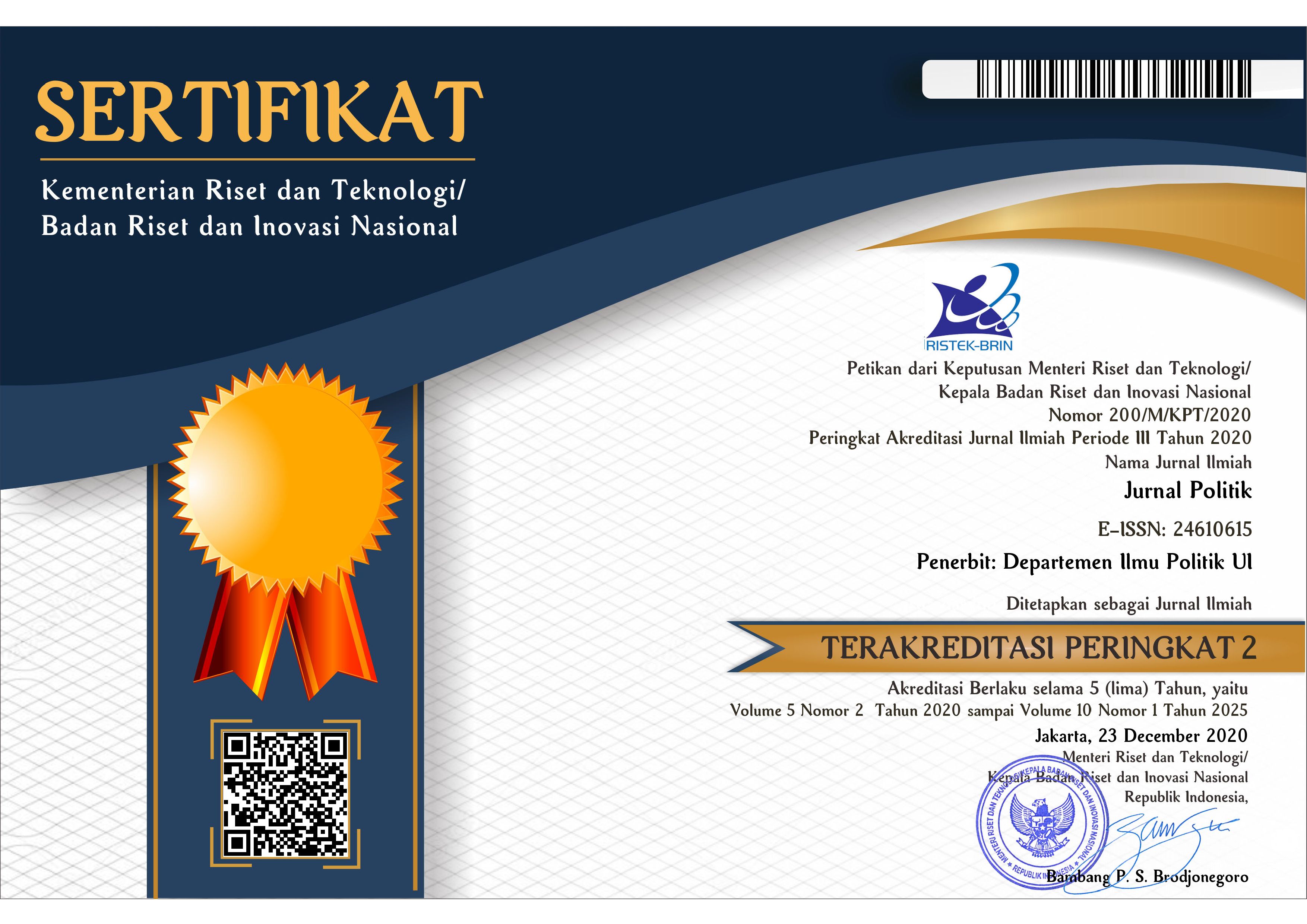Abstract
This research aims to describe multi-layered oppressions experienced by Chinese-Indonesian women as some of them became the victims of mass rape in 1998 Tragedy in Jakarta. There are only few studies discussing violence against Chinese-Indonesian in 1998 Tragedy and amongst them, only few come up with the focus on violence against Chinese-Indonesian women issues (e.g. Purdey 2013; Siegel 1998; Tadié 2009). Several researchers such as Heryanto (2000) and Wichelen (2000) have tried to investigate the tragedy; however their studies only cover sole aspect of the issue which is state violence and gender. Using qualitative methods of document examinations and literature studies, this research aims to explain the complexity of the tragedy by using the concept of layered oppression through the complex relation of structural violence concept, intersectionality, state-gender ideology, and mass rape itself. This research argues that the mass rape in 1998 occurred due to the existence of structural violence against Chinese-Indonesian in general who are relatively superior in wealth but their position is weak socially and politically that has developed negative sentiments among the ‘indigenous’ against them. This situation became more complicated as it intermingled with the existence of state’s gender ideology and the culture of patriarchy on women (social construction on women as a symbol of male honour and objectification of women’s body).
Recommended Citation
Hikmawati, Chandra Linsa
(2017)
"Opresi Berlapis Perempuan Etnis Tionghoa: Pemerkosaan Massal Terhadap Perempuan Etnis Tionghoa dalam Tragedi Mei 1998 di Jakarta,"
Jurnal Politik: Vol. 2:
Iss.
2, Article 4.
DOI: 10.7454/jp.v2i2.1117
Available at:
https://scholarhub.ui.ac.id/politik/vol2/iss2/4
Included in
American Politics Commons, Comparative Politics Commons, Geography Commons, International and Area Studies Commons, International Relations Commons, Political Theory Commons


